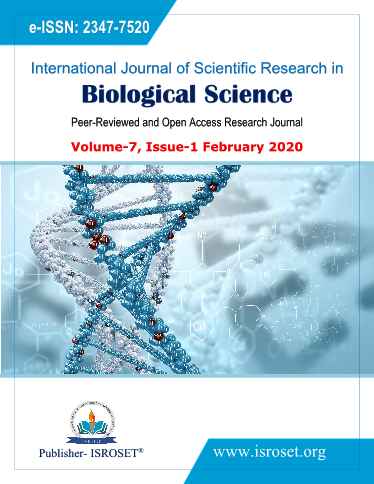Cytoprotective Properties of Makabuhay (Tinospora crispa) Bark Decoction in Cisplatin-induced Nephrotoxic Mice
Keywords:
nephrotoxicity, cisplatin, cytoprotection, blood urea nitrogenAbstract
Renal failure in cancer patients is one common problem in chemotherapy. Patients are frequently treated with nephrotoxic antibiotics like cisplatin. After a single dose of cisplatin, thirty-three percent (30%) of patients develops nephrotoxicity that leads to acute kidney injury. This study investigated the cytoprotective properties of makabuhay bark decoction in cisplatin-induced nephrotoxic mice. The makabuhay was extracted through decoction. Nine adult albino mice were used and divided into three groups. Nephrotoxicity was induced through repeated low dose cisplatin intraperitoneally and makabuhay extracts were administered orally. The treatment lasted for five consecutive days and animals were sacrificed under anesthesia on the 6th day after an overnight fast. Blood was collected for blood urea nitrogen and serum creatinine levels evaluation. Results showed that there is a significant difference in the blood urea nitrogen levels of makabuhay treated mice compared to other groups. However, serum creatinine levels among treatments did not show any significant difference. On the other hand, kidney sections of mice were prepared and interpreted. The normal control group showed normal kidney tissues. Kidney sections from the cisplatin group showed severe renal degeneration and necrosis with congestion. The makabuhay treated mice presented moderate renal congestion and degeneration. The data from this study, proved that makabuhay possess cytoprotective properties in cisplatin-induced nephrotoxicity using established mouse model.
References
Adikwu, E., & Bokolo, B., “Ethanolic leaf extract of Ocimum gratisssiumum ameliorates methotroxate-induced nephrotoxicity in albino rats" , Asian Journal of Medical Sciences, 2018
Ahmad, W., Jantan, I., & Bukhari, S. N., “Tinospora crispa (L.) Hook .f. & Thomson: A Review of its Ethnobotanical, Phytochemical, and Pharmacological Aspects”, Drug and Herbal Research Centre, 2014.
Calvo, E., Chen, V. J., Marshall, M., Ohnmacht, U., Hynes, S. M., Kumm, E., ... & Kays, L., “Preclinical analyses and phase I evaluation of LY2603618 administered in combination with pemetrexed and cisplatin in patients with advanced cancer”, Investigational new drugs, 32(5), 955-968, 2004.
Dasari, S., & Tchounwou, P. B. “Cisplatin in cancer therapy: molecular mechanisms of action”, European journal of pharmacology, 740, 364-378, 2014.
Galia, M. L., & Galia, J. D., “Antiangiogenic activity of TinosporarumphiiBoerl (makabuhay) leaf and stem extracts”, International Research Journal of Biological Sciences, 5(1), 54-9, 2016.
Goldstein, R. S., & Mayor, G. H., “The nephrotoxicity of cisplatin”, Life Sciences, pp 685-690, 1983.
Hipol, R. L., Cariaga, M. F., & Hipol, R., “Anti-inflammatory Activities of the Aqeous extract of the stem of Tinospora crispa (Family Menispermaceae)”, Journal of Nature Studies, pp 88-95, 2012
Jagetia, G. C., & Rao, K., “Evaluation of Cytotoxic Effects of Dichloromethane Extract of Guduchi (Tinospora Cordifolia Miers ex Hook F & THOMS) on Cultured Hela Cells”, Oxford University Press, pp 267-272, 2006
Kadir, F. A., Othman, F., Mahmood, A. A., Hussan, F., & Hassandarvish, P., “Effect of Tinospora on thioacetamide-induced liver cirrhossis in rats”, Indian Journal of Pharmacology Vol 43, pp 64-68, 2011.
Kim, Y. H., Kim, Y. W., Oh, Y. J., Back, N. I., Chung, S. A., Chung, H.G., Lee, K. T., “Protective Effect of the Ethanol Extract of the Roots of Brassica rapa on Cisplatin-Induced Nephrotoxicity in LLC-PK1 Cells and Rats”, Kyung-Hee University, 2006.
Kooti, W., Servatyari, K., Behzadifar, M., Asadi-Samani, M., Sadeghi, F., Nouri, B., & Marzouni, H. Z., “Effective Medicinal Plant in Cancer Treatment, Part 2: Review Study”, Journal of Evidence Based Complementary & Alternative Medicine, pp 982-995, 2017.
Lakshimi, Neelima, Kasthuri, Umarani, & Sudhakar, “Protective Effect of Bauhinia purpurea on Gentamicin-induced Nephroxicity in Rats”, Indian Journal of Pharmaceutical Sciences, pp 551-554, 2009.
Noor, H., & Ashcroft, S. J., “Antidiabetic effects of Tinospora crispa in rats”, Journal of Ethnopharmacology, pp 149-161, 1989.
Oun, R., Moussa, Y. E., & Wheate, N. J., “The side effects of platinum-based chemotherapy drugs: a review for chemists”, Dalton transactions, 47(19), 6645-6653, 2018.
Pinzani, V., Bressolle, F., Haug, I. J., Galtier, M., Blayac, J. P., & Balmès, P., “Cisplatin-induced renal toxicity and toxicity-modulating strategies: a review”, Cancer chemotherapy and pharmacology, 35(1), 1-9., 1994.
Ries, F., & Klasterky, J., “Nephrotoxicity induced by cancer chemotherapy with special emphasis on cisplatin toxicity”, American Journal of Kidney Diseases, Vol 8, pp 368-379, 1986.
Sharp, C. N., “Developing a more clinically-relevant mouse model of cisplatin-nephrotoxicity”, University of Louisville, pp 1-5, 2016.
Singh, S. K., D, C. I., Terasaki, M., Bonn, V. E., Hawkins, C., Squire, J., & Dirks, P. B., “Identification of a Cancer stem cell in Human Brains Tumors”, American Association for Cancer Research, pp 5821-5828, 2003.
Tan, R. S., & Bajo, L. M.“Modulation of Tinospora rhumpii and zinc Salt on DNA Damage in Quinoline-Induced Genotoxicity and Hepatoxicity in Male Albino Mice”. Advances in Toxicology, pp 1-9, 2014.
Downloads
Published
How to Cite
Issue
Section
License

This work is licensed under a Creative Commons Attribution 4.0 International License.
Authors contributing to this journal agree to publish their articles under the Creative Commons Attribution 4.0 International License, allowing third parties to share their work (copy, distribute, transmit) and to adapt it, under the condition that the authors are given credit and that in the event of reuse or distribution, the terms of this license are made clear.







